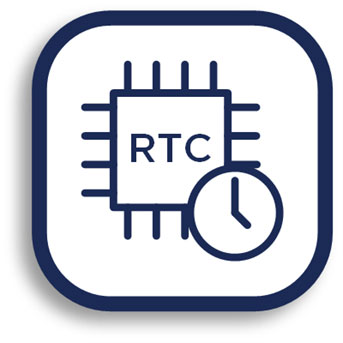Interfacing DS1307 RTC Module with Arduino Make a Reminder GPL3+
Содержание
In this tutorial, you will learn how to use RTC DS1307 module with Arduino to make a reminder.
- 82,337 views
- 0 comments
- 20 respects
Components and supplies
Apps and online services
About this project
You can read this and other amazing tutorials onElectroPeak’s official website
In many electronic projects it is necessary to run an operation according to the time or date And the calculation of the time and date shouldn’t stop when the system shuts down. For this purpose, Real Time Clock (RTC) modules are used. In this tutorial, you will learn how to use RTC DS1 with Arduino to make a reminder.
What You Will Learn:
- What RTC is
- Introduction to DS1307 module
- How to use DS1307 with Arduino
- How to make a smart reminder

What is Real Time Clock?
Real Time Clock or RTC is a system that keeps track of the current time and can be used in any device which needs to keep accurate time.

You can also keep tracking the exact time without using RTC systems, but RTCs have some important advantages. Here are some of these advantages:
- Low power consumption
- Releasing system time from time calculation (this feature is critical because in many cases CPU is operating some delicate tasks like receiving sensors data. and if you don’t use RTC, CPU also has to keep track of the time and it can disrupt processors main tasks.)
- High accuracy

RTCs often have an alternate source of power, so that they can continue to keep time while the primary source of power is off or unavailable. RTCs often use a 32.768 kHz crystal oscillator. But why 32, 768? 32768 is equal to 215 and hence can generate 1 second easily. Also, the crystal must be small with proper width and low power consumption, which can be satisfied with using 32876 Hz. Higher frequencies are larger and fragile crystals, and the lower frequencies have more power consumption that 32, 768KHz.
You can also keep tracking the exact time without using RTC systems, but RTCs have some important advantages. Here are some of these advantages:
- Low power consumption
- Releasing system time from time calculation (this feature is critical because in many cases CPU is operating some delicate tasks like receiving sensors data. and if you don’t use RTC, CPU also has to keep track of the time and it can disrupt processors main tasks.)
- High accuracy
RTCs often have an alternate source of power, so that they can continue to keep time while the primary source of power is off or unavailable. RTCs often use a 32.768 kHz crystal oscillator. But why 32, 768? 32768 is equal to 215 and hence can generate 1 second easily. Also, the crystal must be small with proper width and low power consumption, which can be satisfied with using 32876 Hz. Higher frequencies are larger and fragile crystals, and the lower frequencies have more power consumption that 32, 768KHz.
DS1307 Module Feature Specifications
DS1307 module is one of the most affordable and common RTCs modules. It can accurately keep track of seconds, minutes, hours, days, months, and years.
Some of the DS1307 important features are:
- Ability of Generating Programmable Square-Wave
- Low Current Use; under 500nA in Battery Backup mode
- The Ability to Set the Date Up to Year 2100
- I2C Serial Interface
The DS1307 module has the capability to install a 3-volt CR2023 backup battery. there is also an embedded EEPROM 24c32 memory on this module that can save 32kb of data. In addition, you can measure the environment temperature by installing a DS18B20 sensor on the built-in-place. And you can also read the backup battery voltage from BAT pin.
Источник:










